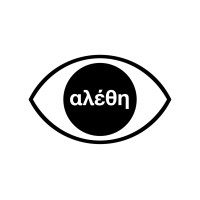Presented on Tuesday 17 December 2019 at Behind Eyes Wide Shut, a symposium.
Organisers: University of the Arts, London Archives and Special Collections Centre and
the Centre for Film, Television, and Screen Studies at Bangor University in Wales
Abstract
Stanley’s last message to the viewer, the grand finale of his cinematic statement, is the word fuck. Perhaps this profanity was not coincidental or merely aesthetic. It is no mystery that language and its emotional repertoire have evolved within societies whose primary function is to organise collective reproduction. This has long been known to anthropologists as well as to those psychologists who have taken Freud seriously. Human societies are akin to masked festivals, and Western society has amplified this phenomenon insofar as we have become individually free to enter one party or the other. This presentation, however, provides an overlook of the way science continues to overlook the personal issues that Stanley poured into his work. It does so by analysing the themes of parenting and sexuality in Eyes Wide Shut and their relation to the concept of reality. Stanley Kubrick was a ‘conceptual illustrator of the human condition’, as Spielberg once put it. And he was a particularly conscious illustrator: very eager to convey (self-)knowledge, yet at the same time very careful not to tell the audience what they are so clearly ‘not seeing’. Twenty years after the film was released, we might be in a better position to verbalise what, I believe, was Stanley’s central message. As biological organisms, we all have an insight into what our lives are about. This can be a source of fear and distress but also one of fulfillment and hope.
Imagine that all the people in this room decide to freely have sex with each other and raise the resulting children together. Why is it that the first thing anyone would think about us is that we are a cult and that we are delusional? The success of Western society can be attributed to the ideal of independent individuals who cooperate constructively. The respect for the wishes of others and the ability to negotiate is a sign of maturity, the realisation that our minds are physically separate but that we can find things in common. However, when it comes to the commonality of sex and the family, we are still children with undifferentiated minds. We are delusional like Bill Harford, a little boy who shouldn’t have betrayed Mother.

These days people are experimenting with different sexual and parenting roles, a cultural process that seemingly evolves in a direction of freedom. Although Eyes Wide Shut (EWS) is about the average monogamous marriage, the film remains relevant. I will quote pioneering evolutionary anthropologist Robin Fox, writing already in the ’80s: ‘The nuclear family has crumbled as a universal, but the bonding processes on which it is based are certainly universal’ (Fox, 1983).
My work suggests that we are a species of creative breeders, though this creative process is largely unconscious (see the bibliography). For thousands of years, we have been engaged in a process of accelerated evolution, whereby parents influence the sexuality of their children in a cyclic, self-perpetuating fashion. The existence of this process explains why there are so many different societies, ethnicities or cultures, even though our humanity and emotions are basically the same. There is a latent knowledge in these emotions that is explored mainly in a psychoanalytic setting. My work aims to provide the theoretical integrity necessary for psychoanalysis to become the science it has aspired to be.
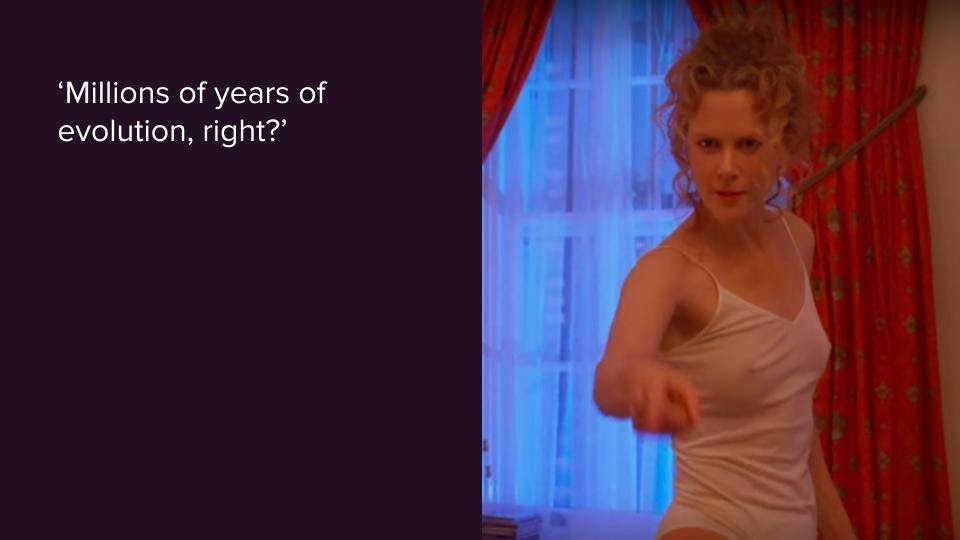
Traumnovelle and EWS are Freudian insofar as these stories show a male subject and his female objects, but they go beyond Freud by exploring the female subject, ‘the mysterious woman’. Who is this mysterious woman? Freud called women ‘the dark continent’. Psychoanalysis is more associated with the humanities these days, perhaps for this lack of communication between men and women, or between science and the humanities. Psychoanalysis is too personal for most scientists, and EWS is among the most personal of movies. Similarly, before they start arguing, Alice gets too personal for Doctor Bill, who can be seen as a bad scientist. She is the one who needs to talk about their affairs, whereas Bill dismisses her as being high. But Alice is pretty lucid. She teaches Bill the lesson that women are as sexually ambitious as men: ‘Men have to stick it in every place they can, but for women, for women it is all about security commitment and whatever the fuck else’.

As Bill says in the same conversation, ‘we know what men are like’. Evolutionary biology is a manly discipline. (I did not make the picture in the above slide; this is how the so called neo-Darwinian paradigm sees itself.) Evolutionary psychology, in particular, claims knowledge about our minds on the basis of ‘selfish genes’ that compete for survival. This is another way of saying that the meaning of life is ‘sticking it in every place you can’, as Alice Harford put it, because the purpose of genes is simply to make more copies of themselves.

EWS makes the case that this is an ignorant, insensitive way of thinking and going about life. Notice the allusion to the copying of DNA in that painting. What do the theorists of human reproduction do in their personal lives, when they get home to their wives after a day’s work? Have their inquiries been successful, or have they failed miserably like Bill Harford. Did they
inquire at all, or did they go about with their eyes wide shut? Ziegler scolds Mandy here and calls her a ‘kiddo’.

Freud was another masculine thinker with a relatively low opinion of women (and of course children). However, like Kubrick and Schnitzler, he had a greater understanding of women than today’s evolutionary psychologists: 1) because he claimed he did not understand them after listening to them and trying very hard, 2) because he was interested in the humanities or what the heart can teach us. Freud had also an interest in anthropology and evolutionary biology. He vacillated greatly, but he concluded that the human psyche results from a primordial situation of conflict for reproductive resources, in other words, apes fighting for control of the females. However limited, these insights remain more accurate than the idea of genes that stick themselves ‘in every place they can’, because they respect our emotions as a source of knowledge. This is the kind of knowledge a good film exploits.

Anthropology has its eyes wide shut too. I will quote Robin Fox (1983) again: ‘There is a natural urge in anthropology to look for universals that do not exist at the substantial, institutional level where they are usually sought’. The science of man says that human societies need a marriage rule, but it doesn’t explore why this is the case, why it brings us suffering, or whether human beings could potentially endure without marriage. In avoiding this, science reproduces our personal childlike state. Indeed, parents have mediated whom we marry and reproduce with since the beginning of time, and like other cultural practices, this leads to innate predispositions or drives, to an unconscious mind that we refuse to know. In a way, then, the conspiracy theorists of EWS are right. Their problem is just that they’re looking for someone to blame, someone who acts consciously and premeditatively, when in reality nobody is to blame (or everybody is to blame). Human societies have always been cults. This is the way they function, particularly since the advent of civilisation and its goddesses of fertility, the Whore of Babylon, and the resulting population explosion.

Marriage is thus not a rule that is consciously obeyed. Sex involves existential feelings (the fear of death by venereal disease becomes divine punishment) because marriage is a natural law that one cannot break, an ancient myth, the basis of all institutions (Maanmieli, 2019a). Patriarchal religions are only a particular form of this phenomenon. A society, including a modern nation-state, always comes with a worldview that gives meaning to people’s lives. ‘Democracy’, ‘the social contract’, ‘the Founding Fathers’ and the fiat money that Bill gives away for Christmas are only secular myths of the Enlightenment.

Some people are inevitably scapegoated in this game; they become addicts, misfits, mentally ill, or join a subculture, an alternative cult. The hearts of women suffer especially. Eyes Wide Shut is a story about how women are recruited and used as a reproductive resource. Boys are recruited too, but EWS is about women.

EWS and Traumnovelle are rather explicit by reducing this to a ‘business’ as represented by the costume shop. A parent–child relationship can be seen as a kind of marriage, as evidenced by the body language in this scene, the way Milich caresses her ring, etc.
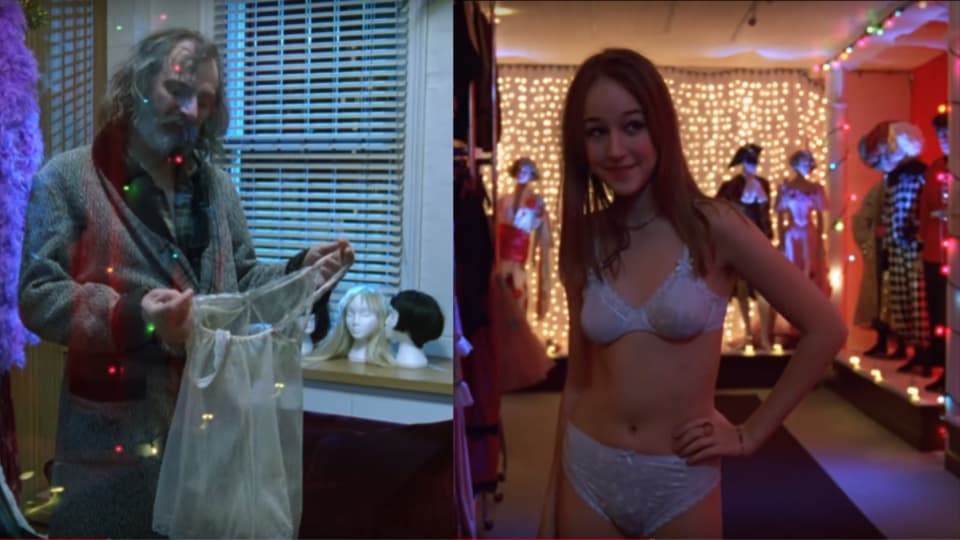
The costume shop articulates between the reality of Ziegler’s party and the dream sequence of the orgy. It shows that the emotions of a parent resemble those of a lover, and that they can be manipulative and fake. It also takes some of the seriousness away by making it funny, which can be relieving and therapeutic. As you may know, Milich’s daughter seems to suggest that she is going to the orgy herself when she whispers in Bill’s ear that he would look good in a certain outfit. The way she looks at him is telling, as well as the background lights resembling Ziegler’s party. This girl could be Bill’s lover, wife or indeed daughter.

EWS shows what happens for a typical Western society for which the Founding Father is important. Immediately after being humiliated by Alice’s confession, Bill receives the call that Lou Nathan-son has died. The Father has died. Bill’s authority as a husband and a father has died. This means that the wives or daughters, in the words of Sandor, are temporarily free ‘to do what they want with other men’. The resulting anxiety and tension takes place next to the father’s corpse in another grotesque moment typical of Stanley.

I believe this is why we see a classical mask in the room (above, on the left). Carl resembles Bill also in the way he comes into the house. Bill has ‘shown his face’: the shame before the father’s authority, the forbidden object of Marion’s desire, another mysterious woman. Thus, Carl can be seen as ‘a Bill’, who consummates with Marion because he has the father’s mask on, a marriage, a license to take her away.

This event at the orgy is the unconscious counterpart, when it is Bill who loses his desired partner to a father figure. We can think of this woman as Marion, whom Bill wants to have sex with later on anyway. This Columbus mask is similar to Lou Nathanson’s face, so the man represents the father and his control of the daughter’s sexuality. Columbus was a founding father of sorts. Because Stanley used different actresses for the role of the mysterious woman, Abigail Good, has said that perhaps this was the point precisely. Kubrick, like Schnitzler, is stressing what women have in common because he is talking about human nature, as well as criticising the obsessiveness of being in love with a particular person. Bill’s relationship to his wife is his relationship to all women.
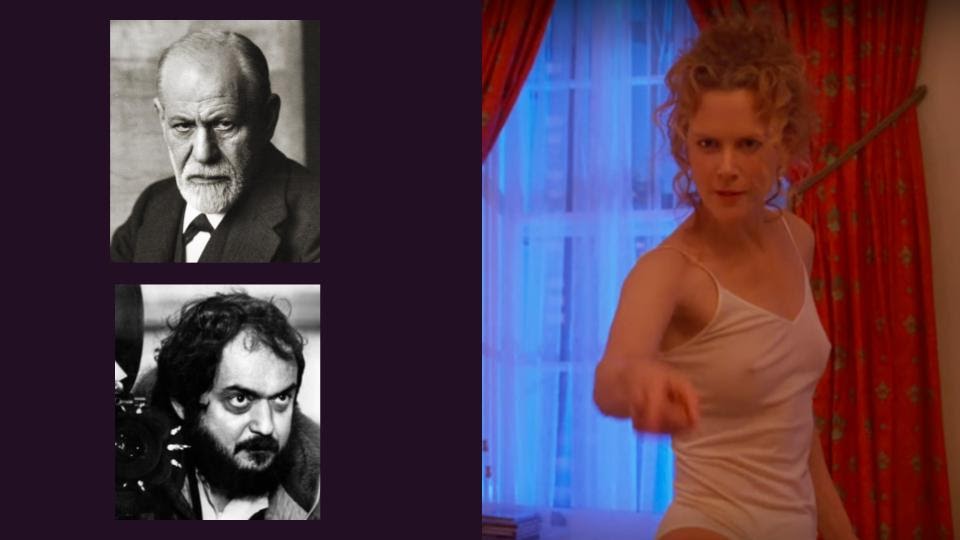
This might seem like a pretty bleak landscape, but only if you believe that Bill’s imagination is accurate. Freud was equally puzzled by the feminine mind, though psychoanalysis is still a work in progress. Traumnovelle ends with the image of Fridolin’s daughter laughing, perhaps echoing the mothers’ laughing at Fridolin and Bill in their dreams. Helena similarly mocks her parents at the end of EWS. She makes them suffer through her choice of Christmas presents, and then walks away following the famous two bald men who were at Ziegler’s party, a scene that deserves careful watching.
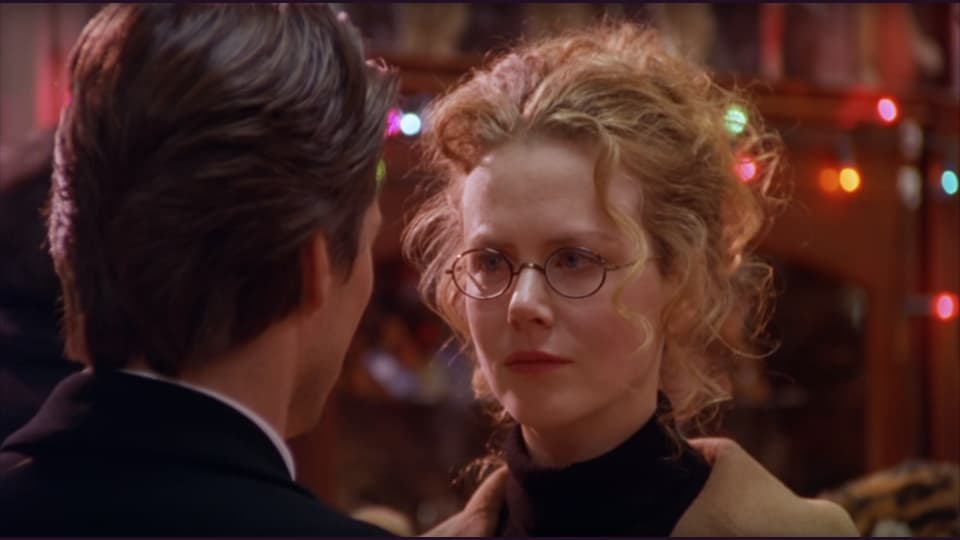
So, what does a woman want? I think Eyes Wide Shut is as close to answering this question as a film can get, and is therefore more advanced than science at present. A wo-man wants to confuse the hell out of a man, just as a child confuses the hell out of her parents, until attention is paid to what is really important. Whatever that is, we might not know, but at least
we know that it isn’t fucking.
Bibliography
Allen, N. J., Callan, H., Dunbar, R., & James, W. (2011). Early human Kinship: From sex to social reproduction. Malden, MA: Blackwell.
Fox, R. (1983). The red lamp of incest: An enquiry into the origins of mind and society. Univ of Notre Dame Pr.
Kolker, R. P., & Abrams, N. (2019). Eyes Wide Shut: Stanley Kubrick and the Making of His Final Film. Oxford University Press.
Laing, R. D. (1971). The Politics of the Family, and Other Essays. London: Psychology Press.
Maanmieli, J. (2019). The nature of kinship terms: From dad and mum to god and society (v1.0). Alethes.net, 1(1). Retrieved from https://alethes.net/journals/the-nature-of-kinship-terms-from-dad-and-mum-to-god-and-society/
Maanmieli, K., & Maanmieli, J. (2019). Children’s pretence: A scientific perspective on social reality (v1.0). Alethes.net, 1(1). Retrieved from https://alethes.net/journals/childrens-pretence-a-scientific-perspective-on-social-reality/
